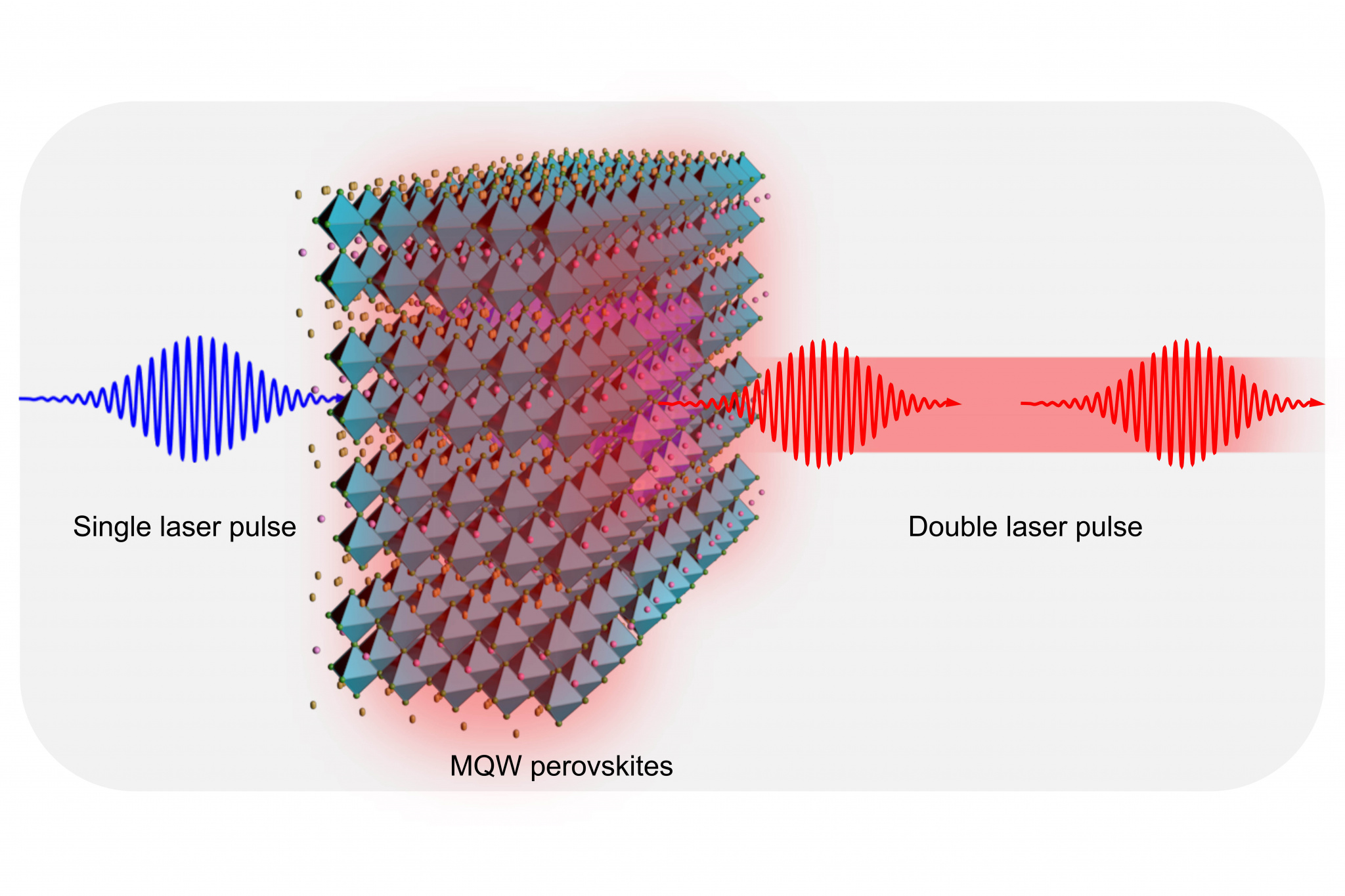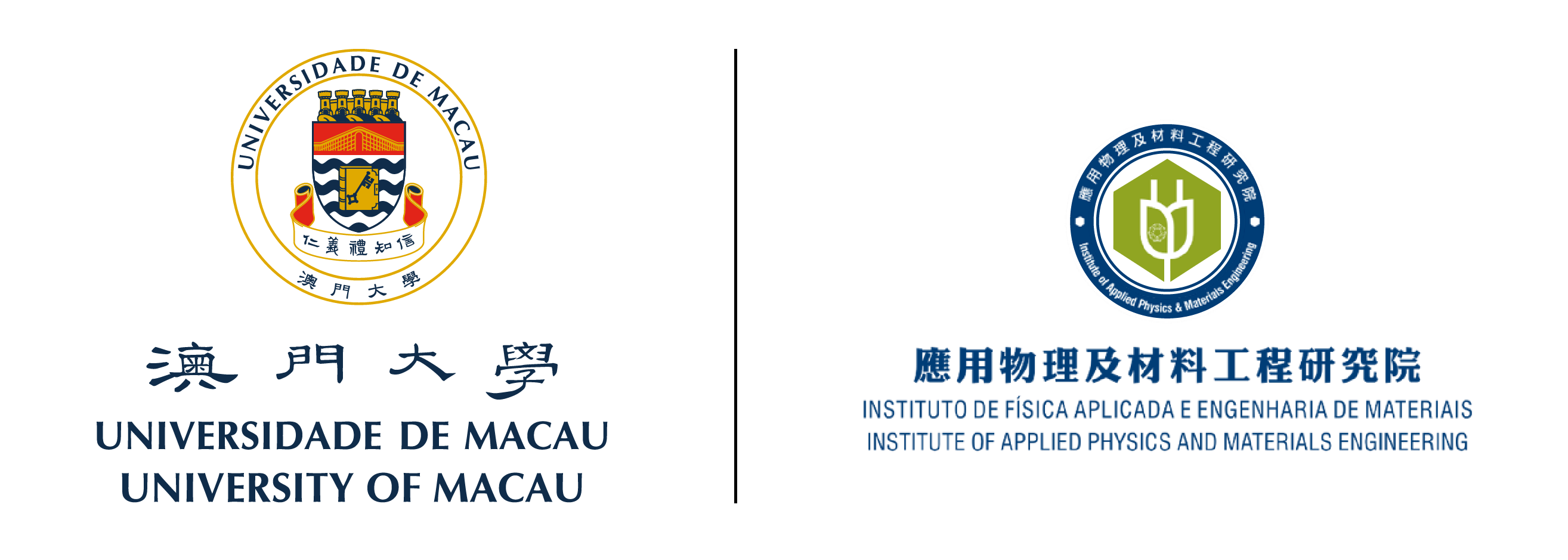A group of doctoral students at the University of Macau (UM) and the Hong Kong Polytechnic University (PolyU) have observed a new phenomenon in metal-halide perovskite optical gain medium, which can lead to the development of ultrashort laser pulse doubling devices. The study has been published in the internationally renowned journal Nature Communications.
Ultrashort laser pulse doubling and manipulating are widely used in many fields, including novel optical spectroscopy, optical communication, as well as imaging and optical signal processing. However, such laser pulse doubling is currently solely realised through bulky external optical instruments, which are not conducive to device integration and miniaturisation. The use of these bulky, external optical setups is inevitable because it is difficult to modify the ultrashort-laser-pulse number through the optical gain medium itself. Therefore, it is imperative to find a new type of optical gain medium that is capable of generating multiple laser pulses with single ultrashort laser pulse excitation. Unfortunately, this kind of gain medium has never been achieved before because of the mandatory requirement of high-efficiency multi-step energy relaxations.
To address this challenge, Ms Guo Jia, Dr Liu Tanghao, and their collaborators in UM’s Institute of Applied Physics and Materials Engineering (IAPME) developed a quasi-two-dimensional metal-halide perovskite quantum wells structure. With single femtosecond laser pulse excitation, they achieved double-pulsed stimulated emission from these quantum wells. By monitoring the carrier dynamics in this new gain material, they found that these unique stimulated emissions originate from two-step high-efficiency carrier funneling from low-dimensional to high-dimensional quantum wells. The discovery allowed the researchers to find a new approach to ultrashort laser pulse multiplication.
The study was led by UM IAPME Assistant Professor Xing Guichuan and PolyU Assistant Professor Li Mingjie. Assistant Professors Hong Guo and Tang Yuxin in the IAPME also made important contributions to the study. The project was jointly funded by the Science and Technology Development Fund, Macau SAR (File no. 091/2017/A2, 014/2017/AMJ), University of Macau (File no. MYRG2018-00148-IAPME), and the National Natural Science Foundation of China (File no. 91733302, 61935017). The research article is available at https://www.nature.com/articles/s41467-020-17096-6 .
澳大學生發現新型雙脈衝激光發射增益材料
澳門大學與香港理工大學的博士生發現了一種金屬鹵化物鈣鈦礦多量子阱材料,用於開發超短激光脈衝倍增器件。相關研究成果已於國際著名期刊《自然—通訊》(Nature Communications)中發表。
超短激光脈衝數目的倍增與調控在新型光譜學、光通信、光學成像和光信號處理等領域都有著廣泛的應用。迄今為止,這種激光脈衝信號數目的倍增都只能用占體積的外部光學元件來實現,而光學增益材料本身無法改變超短激光脈衝數目,不利於器件的集成化和小型化。因此,人們迫切希望找到一種能夠通過單個激光脈衝激發而能產生多個激光脈衝發射的新型光學增益介質,這要求介質中存在高效而多步的能量弛豫過程,但能滿足這種高要求的增益介質之前還沒有被開發出來。
有鑑於此,澳大應用物理及材料工程研究院的博士生郭佳和博士後劉堂昊與香港理大合作,開發了一種准二維金屬鹵化物鈣鈦礦多量子阱結構,通過單個飛秒激光脈衝激發實現雙脈衝激光發射;同時透過載流子動力學研究,揭示這種獨特的受激發射來自於材料中從低維量子阱向高維量子阱分兩步卻異常高效的載流子遷移。該研究提供了一種全新的操控超短激光脈衝的方法。
有關研究在澳大應用物理及材料工程研究院助理教授邢貴川和香港理工大學助理教授李明傑指導下完成。澳大應用物理及材料工程研究院助理教授洪果和湯育欣也做出了重要貢獻。研究得到澳門特別行政區科學技術發展基金(檔案編號:091/2017/A2,014/2017/AMJ)、澳門大學(檔案編號:MYRG2018-00148-IAPME)和國家自然科學基金(檔案編號:91733302、61935017)資助。全文可瀏覽:https://www.nature.com/articles/s41467-020-17096-6。
UM researchers have discovered a new dual-pulse lasing emission gain material
新型雙脈衝激光發射增益材料

